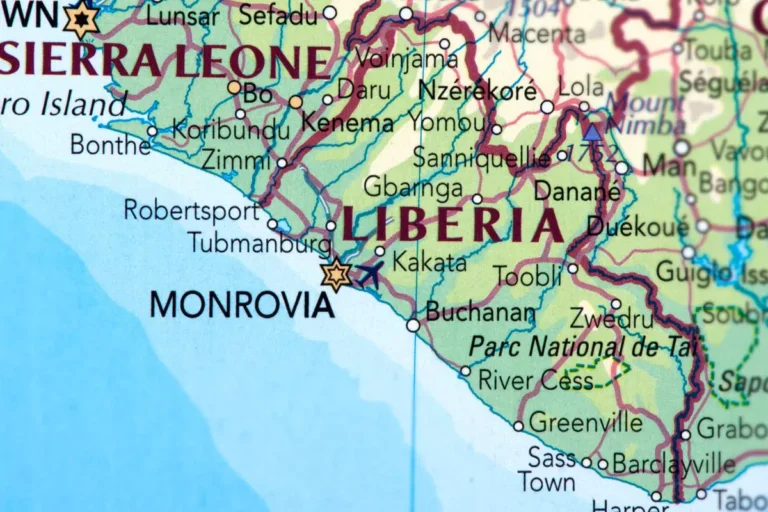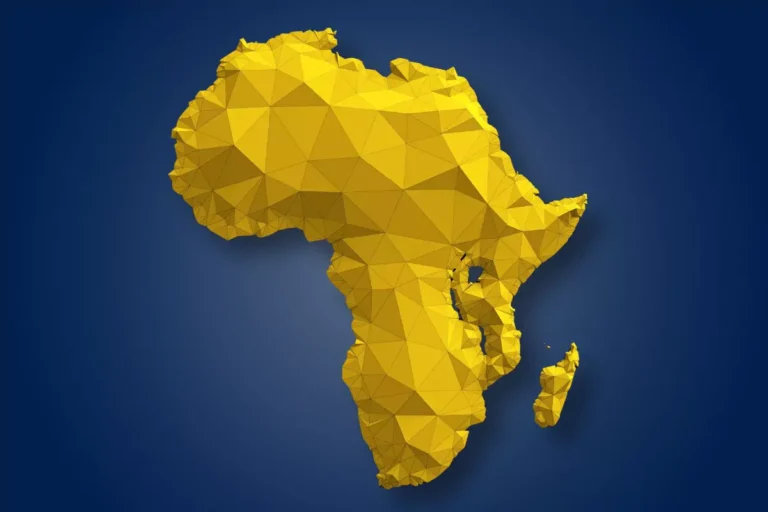Mining Investment Opportunities in Mozambique in 2025
Mozambique is experiencing a remarkable mining renaissance, with 2024 and 2025 marking a pivotal period of regulatory reform, production growth, and renewed international investment interest. As global demand for critical minerals intensifies and supply chain diversification becomes paramount, this Southern African nation has positioned itself as a strategic partner for mining companies seeking reliable, high-quality mineral resources. Against this backdrop, mining investment opportunities in Mozambique in 2025 are capturing the attention of global stakeholders looking for stability, scale, and strategic value.
Recent government data reveals impressive production milestones: ruby output surged 46% in 2024 to reach 3.9 million carats, while the country maintains its position as the world’s largest graphite producer [1]. With major regulatory updates underway and the National Institute of Mines (INAMI) actively targeting fresh investment, Mozambique presents compelling opportunities for mining investors in 2025 and beyond.
Key Highlights
- Mozambique’s ruby production surged by 46% in 2024, reaching 3.9 million carats and surpassing government targets.
- The country remains the world’s largest graphite producer, supplying around 40% of global demand.
- Major reforms to the mining law in 2025 aim to increase transparency, attract investment, and ensure state participation in strategic minerals.
- Investors benefit from tax incentives, flexible licensing, and expanding infrastructure supporting mineral exports.
- Despite some security and infrastructure challenges, Mozambique offers strong potential for critical mineral investment in 2025 and beyond.
Table of Contents
Mining Law Under Review
Mozambique’s mining sector is undergoing its most significant regulatory transformation since 2014, with proposed amendments to Mining Law No. 20/2014 designed to boost transparency, efficiency, and sustainable growth [2]. These changes, announced in July 2025, reflect the government’s strategic vision to leverage rising global demand for critical minerals while attracting private investment and protecting national interests.
1. Key Regulatory Changes for 2025
The most significant development is the introduction of mandatory mining contracts for strategic minerals, with optional contracts for other mineral types. This new structured contractual model strengthens existing provisions while introducing mandatory elements designed to ensure clarity and balance investor interests with national development objectives [3].
A critical requirement is the minimum 20% state participation in strategic mineral projects. While this may appear burdensome from an investor perspective, it often fosters stronger government alignment and facilitates licensing processes. The regulation also reinforces the obligation to publish mining contracts and introduces explicit dispute resolution mechanisms, including arbitration, mediation, and conciliation, enhancing both transparency and legal certainty.
Strategic minerals, defined as those with significant socio-economic relevance and decisive impact on national development, will see mining rights granted exclusively to the state’s designated mining company. Private entities wishing to develop strategic mineral deposits must establish joint ventures with this entity, ensuring minimum 20% state equity participation [4].
2. Investment Law Updates
The 2023 Investment Law (Law nr. 8/2023) has introduced new tax incentives for businesses and provisions to facilitate land use rights transfers. However, implementing regulations defining many aspects of the law’s application were still pending as of early 2025, creating some uncertainty for potential investors [5].
INAMI Director Dino Miguel Milisse emphasizes that Mozambique has implemented comprehensive policies to ensure responsible mining while creating a conducive investment environment. “We have environmental regulations for mining activities, approved by decree, to safeguard our lands, minerals and products while fostering a sustainable mining industry,” Milisse stated in February 2025 [6].
Production Surge – A Look at 2024-2025 Performance Highlights
1. Ruby Production Reaches Record Heights
Mozambique’s gemstone sector achieved exceptional growth in 2024, with ruby production increasing 46% to reach 3.9 million carats, achieving 128% of the annual government target [7]. This remarkable performance follows a recovery from the 2.7 million carats produced in 2023, demonstrating the sector’s resilience and growth potential.
The growth is attributed to expansion activities by SLR Mining, which emerged as Mozambique’s largest ruby producer, contributing over 70% of total production through its new processing plant. Additional factors include the full resumption of operations by Moza Minerals and intensive excavations at highly productive blocks by Montepuez Ruby Mining (MRM) [8].
MRM, 75% owned by Gemfields and 25% by Mwiriti Limitada, has generated nearly $1 billion in revenue since mining began in 2012. The company recorded $151.3 million in income during 2023 and contributed $257.4 million to the Mozambican government through royalties and taxes since operations commenced [9].
2. Gold Mining Maintains Steady Growth
Gold production in Mozambique increased 5% in the first nine months of 2024, continuing the sector’s upward trajectory despite global market volatility [10]. Annual gold production reached just over 1.6 tonnes in 2024, representing 103% of the government’s official estimate of 1,583 kilograms [11].
3. Graphite Global Supply Chain Cornerstone
Mozambique maintains its position as the world’s largest graphite producer, with the Balama operation continuing to supply approximately 40% of global graphite demand. However, the sector faced challenges in late 2024 and early 2025, with Syrah Resources declaring force majeure due to civil unrest following post-electoral violence [12].
Despite these temporary disruptions, the strategic importance of Mozambican graphite for global battery supply chains remains paramount. The operation has secured significant international support, including a $150 million loan from the U.S. Development Finance Corporation, demonstrating confidence in long-term prospects [13].
Investment Climate, Opportunities and Incentives
1. Government Investment Promotion
The Mozambican government actively promotes foreign investment as a driver of economic growth and job creation. Most sectors, including mining, remain open to international investment, with the Agency for Promotion of Investments and Exports (APIEX) serving as the primary contact point for investors [14].
INAMI has introduced various mining licenses tailored to different stakeholders, including Mining Passes for local miners, Joint Venture Mining Passes for partnerships between local and international companies, and Exploration Licenses for expanding geological knowledge. The Mining Concession, the largest and most sought-after license, is typically granted to foreign firms for commercialization and export [15].
2. Tax Incentives and Investment Support
To encourage investment, Mozambique has introduced tax incentives and duty exemptions for mining companies importing equipment. The special foreign exchange regime for mining sectors allows greater flexibility in foreign exchange operations and financing arrangements, recognizing the international nature of mining operations [16].
Corporate income tax rates remain competitive with other mining jurisdictions in the region, while accelerated depreciation allowances and loss carry-forward provisions provide additional fiscal benefits for well-structured mining projects.
3. Infrastructure Development
Mozambique’s infrastructure development has been closely linked to mining sector growth, with major projects driving substantial investment in transportation, power, and port facilities. The Nacala Logistics Corridor, serving coal mining operations in Tete Province, demonstrates the scale of infrastructure development supporting large-scale mining operations [17].
The country’s extensive coastline and deep-water ports provide significant advantages for mineral exports, particularly to Asian markets where demand for Mozambican minerals is strongest. Recent investments in port infrastructure and specialized facilities enable efficient export of bulk commodities and mineral concentrates.
Key Mineral Opportunities for 2025
1. Critical Minerals for Energy Transition
Mozambique’s diverse mineral endowment positions the country strategically for the global energy transition. Beyond its established graphite production, the country hosts significant potential for rare earth elements, lithium, and other critical minerals essential for renewable energy technologies and electric vehicles.
The government’s Five-Year Plan prioritizes mining sector expansion by revitalizing industrial processing capabilities, strengthening local exploration, and ensuring transparent management of mineral resources. Particular emphasis is placed on reducing raw mineral exports by promoting domestic processing, especially for minerals such as graphite and gold [18].
2. Heavy Mineral Sands Expansion
The Moma Titanium Minerals Mine continues to demonstrate the potential of Mozambique’s heavy mineral sands deposits. Despite a 10% revenue decline in 2024 due to market conditions, the operation maintains its position as one of the world’s largest titanium mineral producers with resources sufficient for over 100 years of production [19].
Additional heavy mineral sands deposits along Mozambique’s 2,500-kilometer coastline present opportunities for new projects, particularly as global demand for titanium minerals grows in aerospace, automotive, and industrial applications.
3. Coal Sector Resilience
While facing challenges from global energy transition trends, Mozambique’s high-quality coal reserves continue to attract investment, particularly for metallurgical applications in steel production. The Moatize operation, now under Vulcan Resources ownership, demonstrates the ongoing commercial viability of Mozambican coal in international markets [20].
Challenges and Risk Management
1. Security Considerations
The mining sector has faced significant challenges from civil unrest and security concerns, particularly in northern provinces. Post-electoral violence in October 2024 through January 2025 disrupted operations and led to force majeure declarations at major projects [21].
Mining companies have implemented comprehensive security measures and contingency planning to manage these risks. Collaboration with government security forces, private security providers, and international partners helps mitigate security risks and maintain operational continuity.
2. Infrastructure and Operational Constraints
Despite substantial infrastructure investment, transportation networks remain vulnerable to weather-related disruptions. Heavy rains and tropical storms cause frequent degradation of roads and bridges, requiring mining companies to plan for seasonal variations and invest in resilient infrastructure systems [22].
Power supply reliability continues to require attention, with mining companies often investing in backup generation capacity and renewable energy systems. The Balama operation’s hybrid power system, combining diesel generation with solar photovoltaic arrays and battery storage, demonstrates innovative approaches to power supply challenges [23].
Strategic Outlook to Position for Growth
1. Supply Chain Diversification
The global focus on supply chain security for critical minerals creates particular opportunities for Mozambique’s mining sector. As countries and companies seek to diversify supply sources and reduce dependence on single suppliers, Mozambique’s diverse mineral endowment becomes increasingly valuable.
The development of critical mineral processing capabilities could create additional value and strengthen the country’s position in global supply chains. Government policies supporting value addition and local processing could attract investment in downstream manufacturing and create additional economic benefits.
2. Regional Integration
Mozambique’s strategic location in Southern Africa provides access to both regional and international markets. The country’s membership in the Southern African Development Community (SADC) creates opportunities for preferential market access and regional integration, while coastal location and port infrastructure provide competitive advantages for accessing Asian markets.
3. ESG Leadership Opportunities
The increasing focus on environmental, social, and governance (ESG) factors in mining investment creates opportunities for Mozambique to position itself as a leader in sustainable mining practices. The country’s renewable energy potential, community engagement frameworks, and government commitment to sustainable development provide a foundation for ESG leadership.
Conclusion
Seizing the Moment
Mozambique’s mining sector in 2025 presents a compelling investment proposition, combining world-class mineral resources with improving regulatory frameworks and government support for international investment. The recent production achievements, particularly the 46% surge in ruby production and continued graphite supply leadership, demonstrate the sector’s resilience and growth potential.
The ongoing mining law review and regulatory improvements signal the government’s commitment to creating a transparent, efficient, and investor-friendly environment. While challenges remain, including security concerns and infrastructure constraints, the strategic importance of Mozambican minerals for global supply chains creates substantial opportunities for well-prepared investors.
For mining companies seeking exposure to critical minerals, precious stones, and traditional commodities, Mozambique offers a unique combination of geological diversity, strategic location, and government support. These strengths form the foundation of mining investment opportunities in Mozambique in 2025, making the country a prime candidate for both short-term gains and long-term partnerships.
As the global economy increasingly depends on secure and diversified mineral supply chains, Mozambique’s role as a reliable supplier becomes ever more important. The country’s commitment to responsible mining practices, regulatory transparency, and international partnerships positions it as a preferred destination for mining investment in Africa.
Ready to explore opportunities in one of Africa’s fastest-growing mining markets?
References.
[1] FurtherAfrica. (2025). Mozambique’s Ruby Production Set for a 46% Surge in 2024.
[2] PLMJ. (2025). Mozambique’s Mining Law Under Review.
[3] PLMJ. (2025). Proposed Amendments to Law No. 20/2014.
[4] PLMJ. (2025). Strategic Minerals Definition and Requirements.
[5] U.S. Department of State. (2024). 2024 Investment Climate Statements: Mozambique.
[6] Energy Capital Power. (2025). Mozambique’s INAMI Targets Fresh Investment in Solid Minerals.
[7] FurtherAfrica. (2025). Mozambique’s Ruby Production Statistics 2024.
[8] FurtherAfrica. (2025). Ruby Production Growth Factors.
[9] FurtherAfrica. (2025). Montepuez Ruby Mining Financial Performance.
[10] Mozambique Mining Journal. (2024). Mozambique’s Golden Streak Continues: Production Surges 5% in 2024.
[11] Club of Mozambique. (2025). Mozambique: Gold production falls 2% in 2024 to just over 1.6 tonnes.
[12] Mining Weekly. (2025). ESG, stability amid reforms priority for development.
[13] Syrah Resources. (2024). U.S. DFC Loan Agreement.
[14] U.S. Department of State. (2024). 2024 Investment Climate Statements: Mozambique.
[15] Energy Capital Power. (2025). INAMI Mining License Framework.
[16] Energy Capital Power. (2025). Tax Incentives and Investment Support.
[17] Chambers Global Practice Guides. (2025). Mining 2025 – Mozambique Infrastructure.
[18] PLMJ. (2025). Five-Year Plan Mining Sector Priorities.
[19] AMAN Alliance. (2025). Moma titanium mine revenues down 10% in 2024.
[20] Mining.com. (2021). Vale completes sale of Mozambique coal assets to Vulcan.
[21] Mining Weekly. (2025). Post-election protests impact on mining sector.
[22] U.S. Department of State. (2024). Infrastructure challenges in Mozambique.
[23] Syrah Resources. (2024). Balama Hybrid Power System Implementation.






